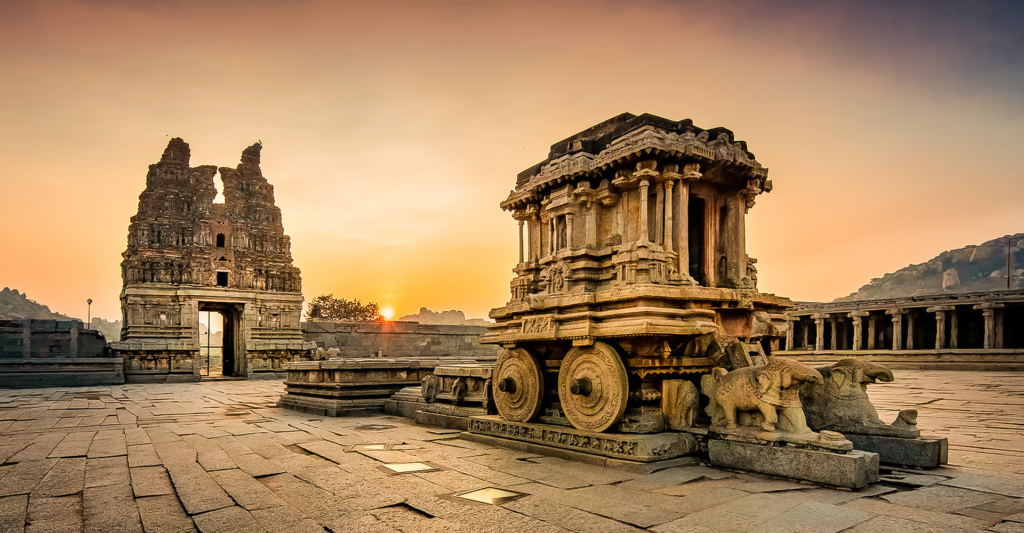Nestled in the heart of Karnataka, India, lies a place where history breathes, and stones whisper tales of a bygone era. Welcome to Hampi, an ancient city that stands as a testament to the grandeur of the Vijayanagara Empire. This UNESCO World Heritage Site is a treasure trove for culture enthusiasts, history buffs, and wanderers seeking a deeper connection with India’s glorious past.
Unraveling the Historical Tapestry

The Vijayanagara Empire
Hampi, once the capital of the mighty Vijayanagara Empire, flourished from the 14th to the 16th century. It was a flourishing center of trade, art, and culture, attracting merchants, scholars, and artists from across the world.
Architectural Marvels
One of the most striking features of Hampi is its awe-inspiring architecture. The ruins of magnificent temples, palaces, and marketplaces are a testament to the empire’s architectural prowess. The Virupaksha Temple, dedicated to Lord Shiva, and the Vittala Temple, known for its iconic stone chariot, are among the most revered structures.
Monuments That Speak Volumes
The Archaeological Museum of Hampi is a treasure house of artifacts that offer a deeper insight into the life and times of the Vijayanagara Empire. Sculptures, pottery, and inscriptions, carefully preserved, provide a glimpse into the daily lives of the people who once inhabited this city.
A Glimpse into Local Life
Hampi Bazaar
Stroll through the vibrant lanes of Hampi Bazaar, where local artisans sell traditional handicrafts, jewelry, and clothing. This bustling market echoes the spirit of the ancient trade hub that once thrived here.
The Language of Dance and Music
Hampi is not just about stones; it’s also about the living culture that thrives among them. The annual Hampi Utsav celebrates the region’s rich heritage through vibrant folk dances, classical music performances, and traditional art exhibitions.
The Echoes of Mythology
Mythological Significance
Hampi holds a special place in Hindu mythology. It is believed to be the place where Lord Rama met Lord Hanuman in his quest to rescue Sita. The Anjaneya Hill, believed to be the birthplace of Lord Hanuman, offers a panoramic view of the region.
Matanga Hill
For those seeking spiritual solace, a trek up Matanga Hill at dawn promises a breathtaking sunrise and a serene atmosphere, perfect for meditation and reflection.
Embracing Hampi’s Culture Today
Homestays and Culinary Adventures
Stay with local families who warmly welcome guests into their homes, providing a unique opportunity to immerse oneself in the local way of life. Don’t miss out on savoring traditional Kannadiga dishes, which are a delightful fusion of flavors and aromas.
Community Engagement
Participate in community-driven initiatives, such as heritage conservation projects or workshops conducted by local artisans. This not only enriches your experience but also contributes to the preservation of Hampi’s cultural legacy.
Preserving the Legacy
Responsible Tourism
While exploring Hampi, it is crucial to practice responsible tourism. Respecting the heritage sites, refraining from littering, and supporting local businesses are small steps that go a long way in safeguarding this cultural treasure for future generations.
In conclusion, a visit to Hampi is not just a journey through time, but also an opportunity to connect with a vibrant, living culture. The echoes of history that reverberate through the stones of this ancient city are an invitation to all who seek to understand and appreciate India’s rich cultural heritage. So, pack your bags, and let Hampi be your guide to an unforgettable voyage through the annals of time.


